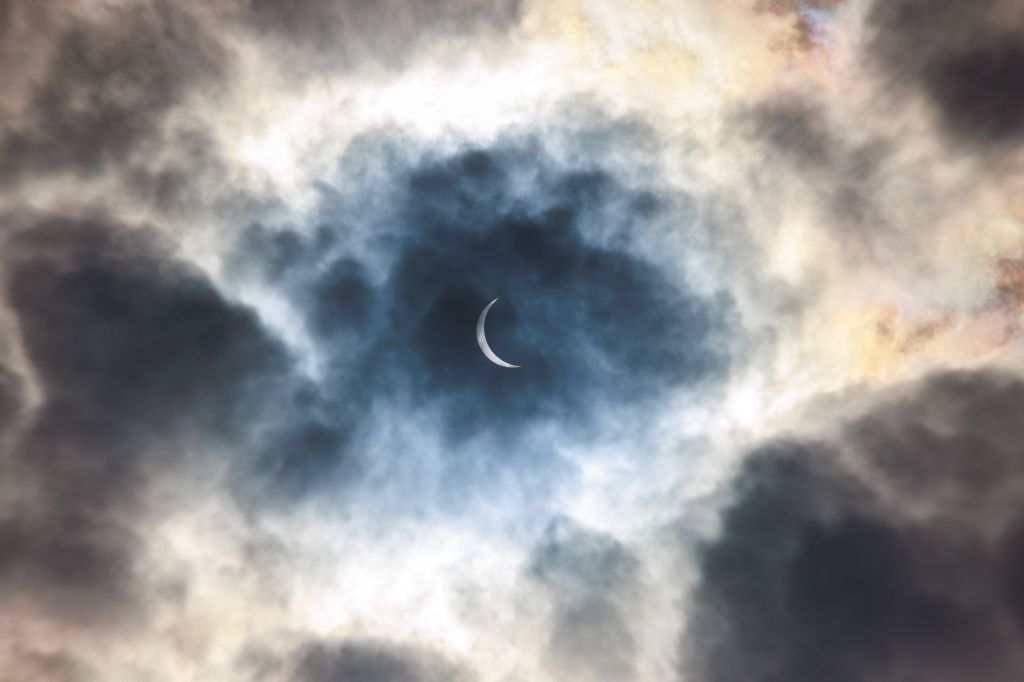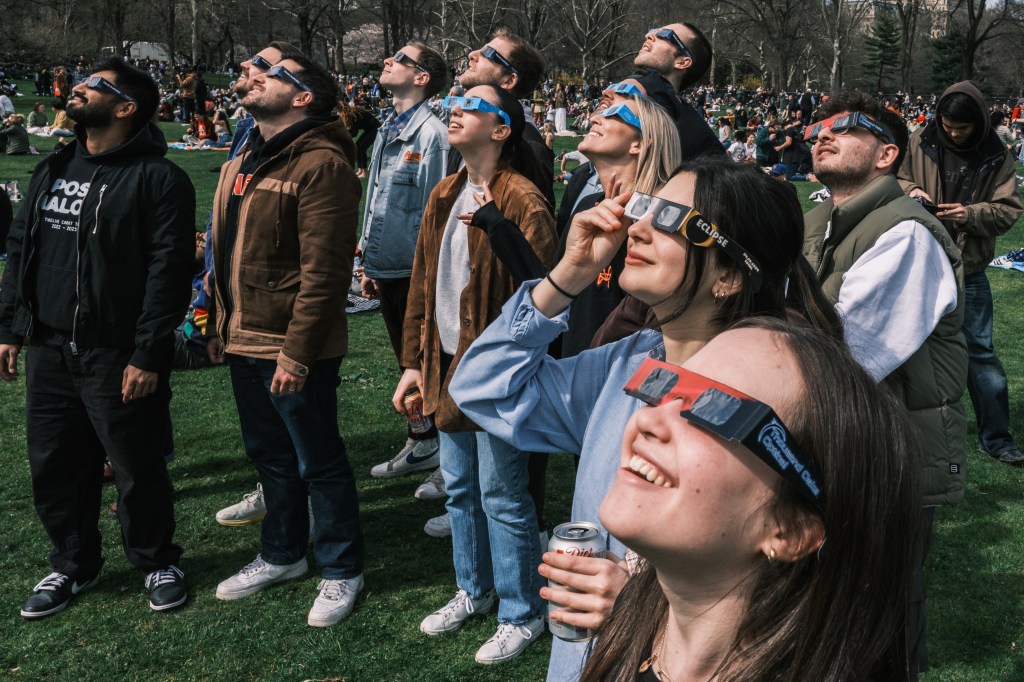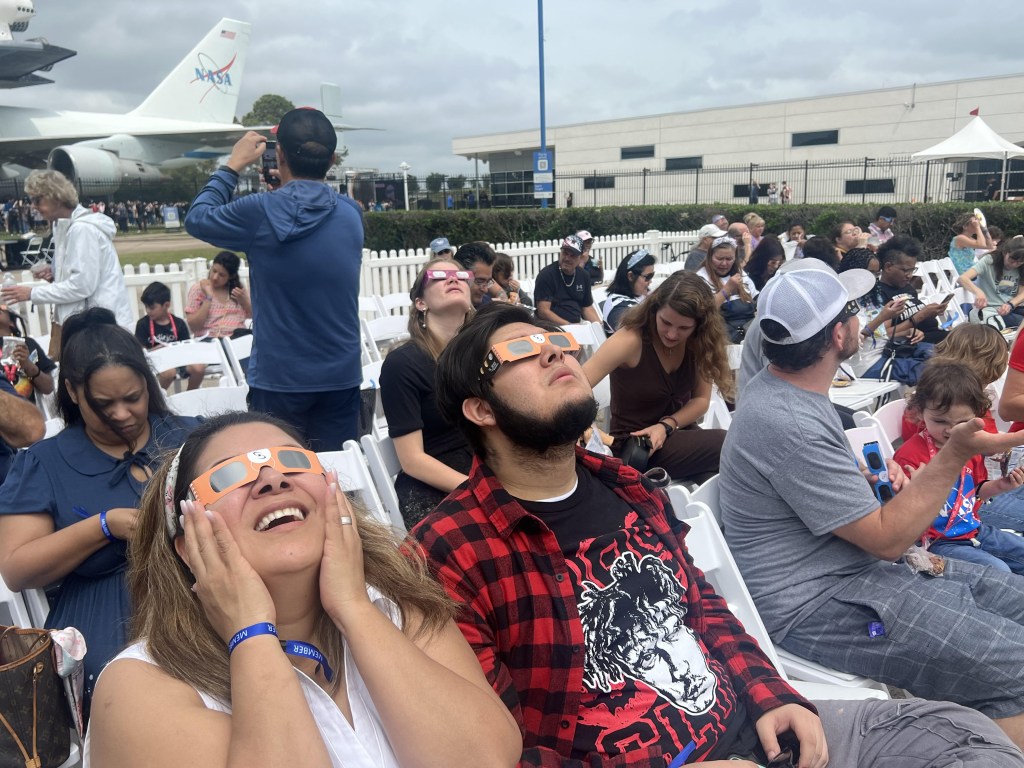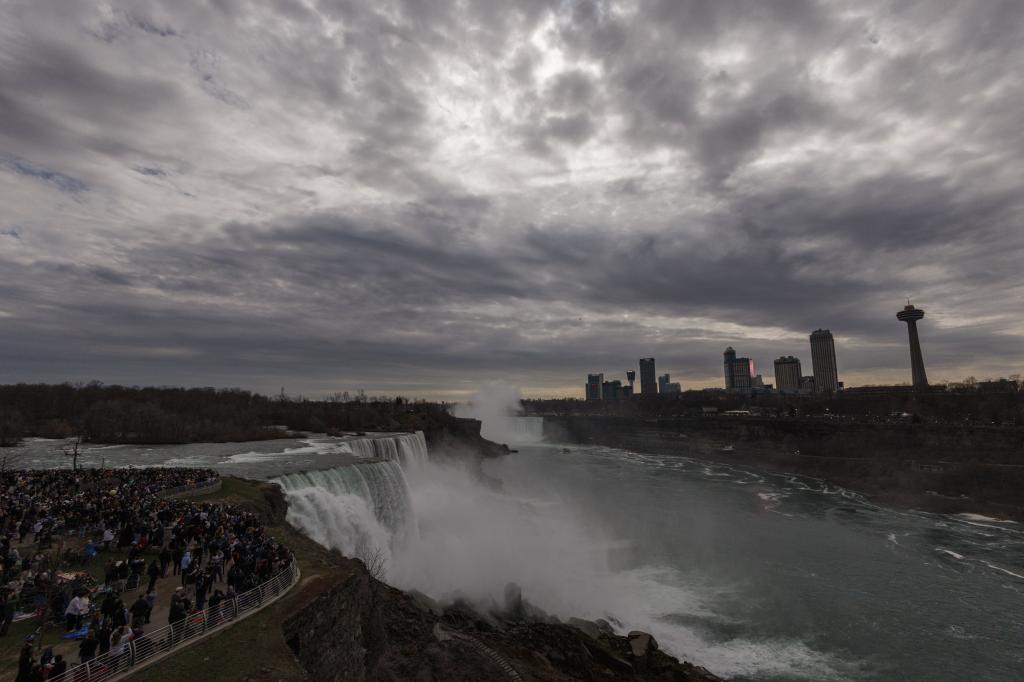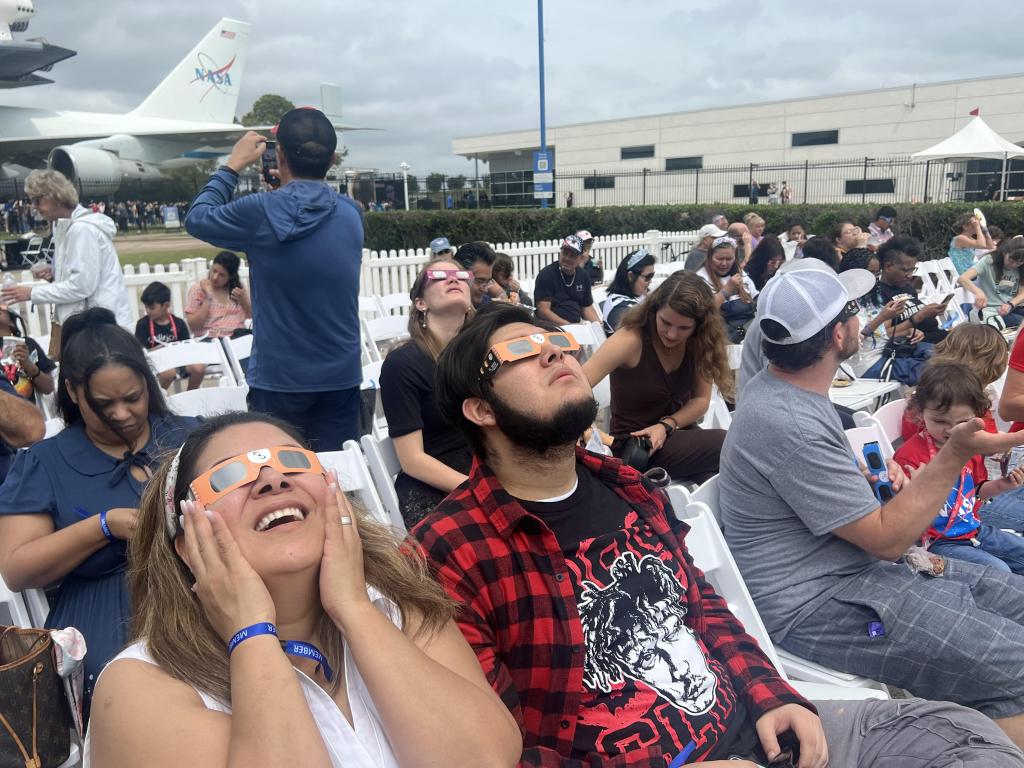Cloudy skies in path of totality clear just in time for breathtaking eclipse views
Contact The Author
It ended up being just a phase.
Millions of Americans in the path of totality woke up to dreary skies Monday that they feared would threaten their views of the celestial spectacle — only for the gloom to give way to a picture-perfect afternoon for eclipse-gazing.
“That was the most beautiful thing I’ve ever seen,” Brian Harris, 57, an engineer from West Terra Haute, Indiana told The Post mere moments after the shroud of darkness enveloping Indianapolis during the total solar eclipse began to lift.
“I’m a science guy, a data guy, but my lord, some things are just not random coincidences,” he said, visibly awestruck by what he had witnessed.
Some eclipse watchers, like Ethan MacCumber, 25, of Brooklyn, scrambled to change their travel plans after checking the weather report Monday morning.
“I was going to fly to Rochester, which I planned a bit in advance, but there was 90% cloud coverage so I nixed that trip and found a flight to Indianapolis instead,” he said, admitting he was bitten by the eclipse bug after catching a fleeting glimpse of the 2017 total solar eclipse in Carbondale, Illinois.
“It was so great that I needed to see this one. It was cloudy but then the clouds opened up, like a hole for the eclipse, and it just exploded.”
Karen Pinsker was one of several hundred people gathered outside of Indianapolis International Airport who stopped what they were doing right around 3 p.m. to gaze up at the sky as the eclipse reached its peak.
“The universe just turned upside-down for three minutes,” said Pinsker, who choked back tears, clutched her face and muttered “oh my God” during the eclipse.
“It was extremely moving. I felt connected to the Earth, universe, and the people having the same experience next to me. It was so special.”
Everything to know about the 2024 solar eclipse
- The solar eclipse will take place Monday, April 8, blocking the sun for over 180 million people in its path.
- The eclipse will expand from Mexico’s Pacific Coast across North America, hitting 15 US states and pulling itself all the way to the coast of Newfoundland, Canada.
- New Yorkers will experience the solar eclipse just after 2 p.m. Monday.
- A huge explosion on the sun, known as a coronal mass ejection, is anticipated, according to experts. This happens when massive particles from the sun are hurled out into space, explains Ryan French of the National Solar Observatory in Boulder, Colorado.
- To avoid serious injury to the eyes, it is necessary to view the event through proper eyewear like eclipse glasses, or a handheld solar viewer, during the partial eclipse phase before and after totality.
- The next total solar eclipse will take place on Aug. 12, 2026, and totality will be visible to those in Greenland, Iceland, Spain, Russia and a small slice of Portugal.
Eclipse-watchers in Erie, Pennsylvania, some of whom shelled out as much as $1,200 per night for hotel rooms in the path of totality, started their morning unsure if they’d be getting their money’s worth as a gray blanket of clouds covered the city, accompanied by intermittent rain.
In spite of the inclement weather, officials at the Erie Downtown Partnership urged sky-gazers not to be deterred by the soggy conditions, assuring visitors the rain would clear up in time for the big show.
Turns out they were right all along.
As if on cue, the clouds parted to let the light shine through just as the moon began to cross the sun at 2 p.m., ensuring an unobstructed view for the hundreds of revelers gathered at Oliver’s Beer Garden on the banks of Lake Erie.
After the totality, glasses clinked and cheers went up from the crowd, many of whom had spent hours trying to drink away the nervous energy the uncertain weather had stoked. The eclipse-gazers tipped back the bar’s solar eclipse-themed adult beverage offerings like the “solarita” and “sun beam.”
Oliver’s owner Nick Scott, 83, told The Post the event is a watershed moment for the Western Pennsylvania burg.
“For Erie, this is the biggest event in the history of the city; nationwide attention because we’re in the path of totality.”
As for the fortuitous change in the weather, Scott said he wasn’t surprised to see it raining in the morning, but “I was surprised when the skies cleared up at the perfect time, because it will probably get cloudy again later.”
But I’d rather be lucky than good, so that’s an awesome, awesome feeling,” the octogenarian said as a DJ blared sun and moon-themed tunes.
Bar-goers also couldn’t believe the shocking turn of weather, they shared as they sipped, gazing at the sky through protective glasses as the moon slowly nibbled away at the sun.
John Litz, 40, of Pittsburgh, had been posted up at Oliver’s since around 11 a.m., watching the developing clouds and drizzle and crossing his fingers they would dissipate in time for the totality.
His spirits lifted as the 3:16 p.m. peak of the eclipse approached.
“You know, it looked like perfection. Beautiful, clear skies. We got lucky. Blessed from whoever,” he said.
“So it’s really incredible to see, and I’m really happy we’re here.”
Of the 31 million people who live in the path of totality, where the sun was completely obscured by the moon for up to four minutes, 12 million live in Texas, more than any other state.
But morning skies in the Lone Star State portended a disappointing view of the last total solar eclipse to be visible from North America until 2044.
In Houston, where a respectable 94% of the sun was blocked out at the peak of the celestial event, a crowd slowly gathered for a watch party at NASA Space Center under overcast, drizzly skies when the eclipse began at 12:20 p.m.
Once again, as the sun and moon began to align, the cloud cover dispersed, giving Houstonians a Texas-sized eyeful of the near-total eclipse.
Some spectators told The Post that the few remaining clouds actually changed the experience for the better.
“It was great, we got to see everything. I actually think the clouds helped,” said somewhat surprised Houston local Monica Martinez.
“You got two different experiences,” added Adam Burke, also from Houston.
“The clouds made it very special when they kept moving,” said Diana Sprung, who is visiting Houston from Germany.
Throughout the eclipse, onlookers cheered every few minutes as the moon slowly crept in front of the sun. Every time the clouds moved, the awe-inspiring view grew all the more dramatic.
“It’s just not something you get to see every day and have the opportunity to experience it with your grandchild,” Carla Thompson shared.
“It’s just so exciting!”








